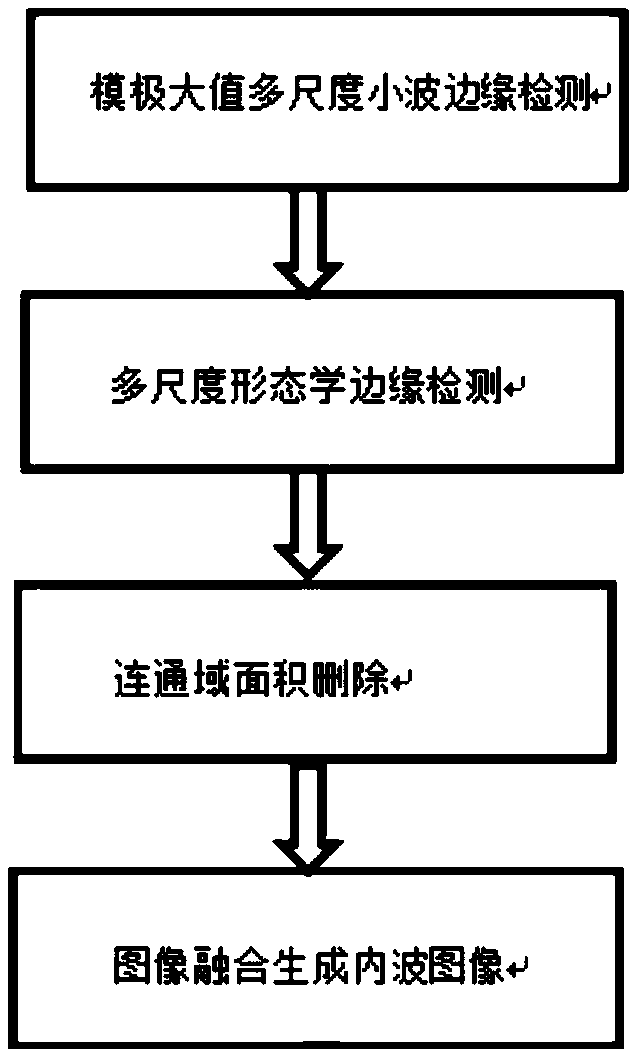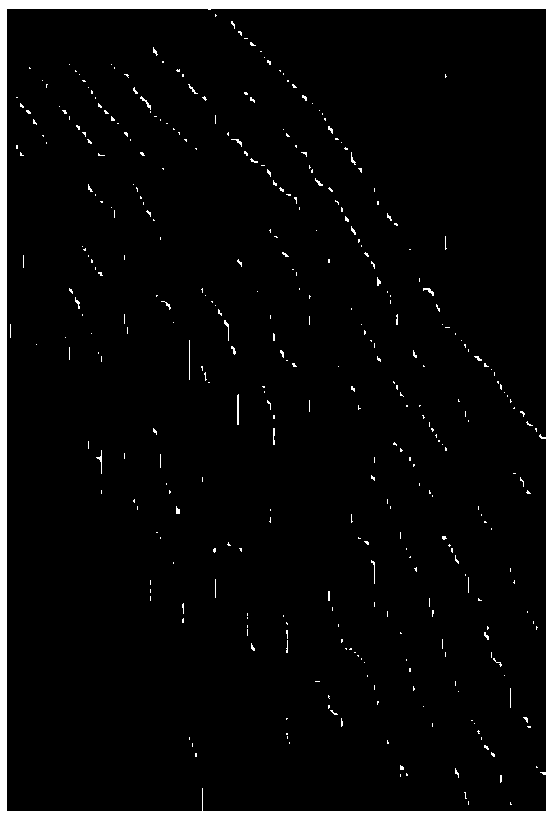Marine internal wave detection algorithm based on multi-scale mathematical morphological feature fusion
A mathematical morphology and feature fusion technology, applied in computing, image data processing, computer parts and other directions, can solve problems such as inapplicable fluid edges and inconspicuous edges, achieving convenient and efficient algorithms, preserving edge features, and improving accuracy. sexual effect
- Summary
- Abstract
- Description
- Claims
- Application Information
AI Technical Summary
Problems solved by technology
Method used
Image
Examples
Embodiment 1
[0043] An ocean internal wave detection algorithm based on multi-scale mathematical morphology feature fusion, comprising the following steps:
[0044] Step 1, wavelet decomposition: Use wavelet decomposition to decompose the detection object, and finally obtain the high-frequency sub-image and low-frequency sub-image of the source image. In terms of low frequencies, there is only one low frequency approximation sub-image. There are three high-frequency sub-images, which are high-frequency detail sub-images in three directions: horizontal, vertical, and diagonal.
[0045] a. Select the smooth function θ(x,y) as the scaling function, and find the first-order partial derivative ψ of the function θ(x,y) x (x,y) and ψ y (x,y), the ψ x (x,y) and ψ y (x,y) is regarded as a wavelet function.
[0046] B. carry out wavelet transform to image with following formula (1), (2), obtain two components of the horizontal and vertical direction of wavelet transform and
[0047]
[...
Embodiment 2
[0080] The technical effects of the present invention will be described below through simulation.
[0081] An ocean internal wave detection algorithm based on multi-scale mathematical morphology feature fusion, comprising the following steps:
[0082] Step 1, use wavelet decomposition to decompose the detection object, and finally obtain the high-frequency sub-image and low-frequency sub-image of the source image. figure 2 is the original map of ocean internal waves, image 3 It is the edge detection map of the ocean internal wave by the modulus maximum multi-scale wavelet.
[0083] Step 2: Use gray-value mathematical morphology to perform edge detection on low-frequency approximate sub-images containing a large amount of image information to obtain low-frequency image edges, such as Figure 4 shown.
[0084] Different structural elements are used to detect the edge of the image, and the edge image is fused by the method of entity weighted fusion and information entropy, a...
PUM
 Login to View More
Login to View More Abstract
Description
Claims
Application Information
 Login to View More
Login to View More - R&D
- Intellectual Property
- Life Sciences
- Materials
- Tech Scout
- Unparalleled Data Quality
- Higher Quality Content
- 60% Fewer Hallucinations
Browse by: Latest US Patents, China's latest patents, Technical Efficacy Thesaurus, Application Domain, Technology Topic, Popular Technical Reports.
© 2025 PatSnap. All rights reserved.Legal|Privacy policy|Modern Slavery Act Transparency Statement|Sitemap|About US| Contact US: help@patsnap.com



